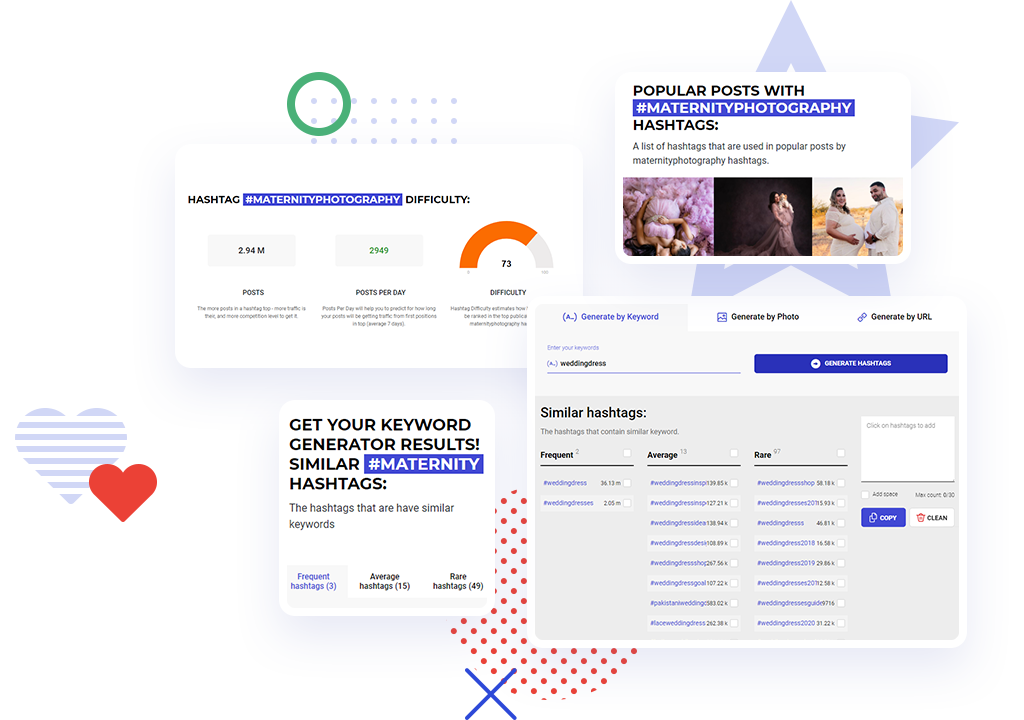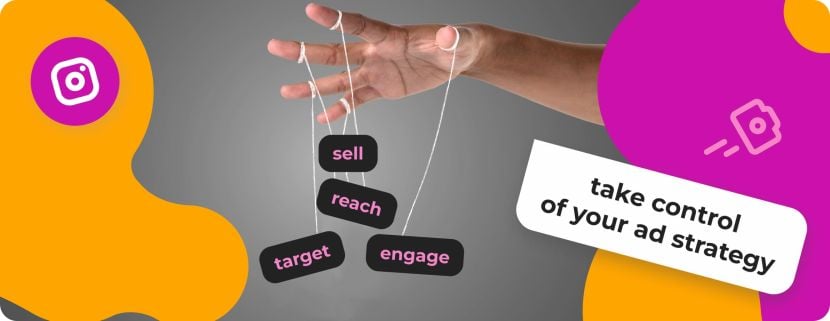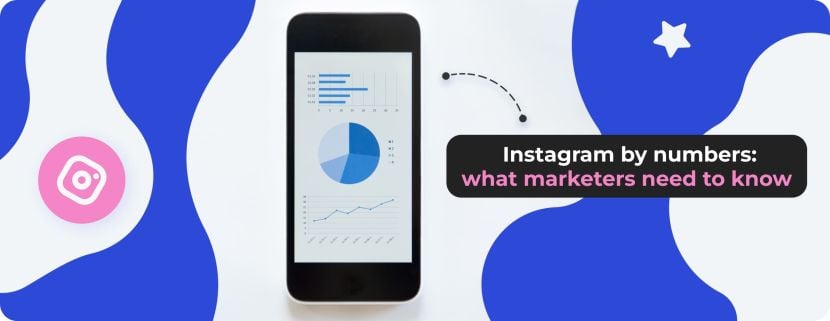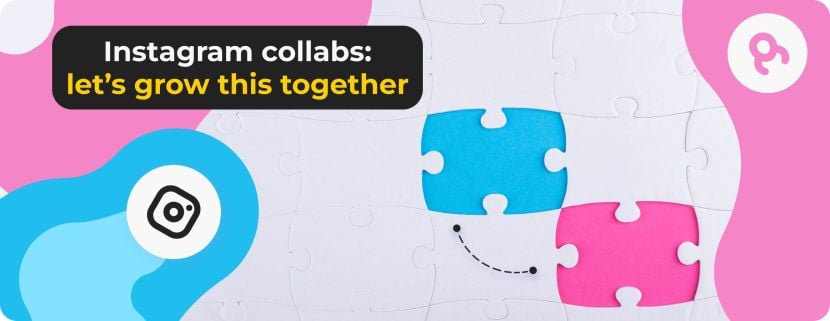
The logic of ranking is the same. Hashtags are the only type of searchable words that can quickly get your post all the way up the rankings. They help the Instagram algorithm to understand what the content is about and show it to everyone that might be interested.
If you’re struggling with poor and narrow reach for your IG posts and having trouble making your account popular, I have news for you. If you’re the type of person who thinks that hashtags are defunct, I have news for you.
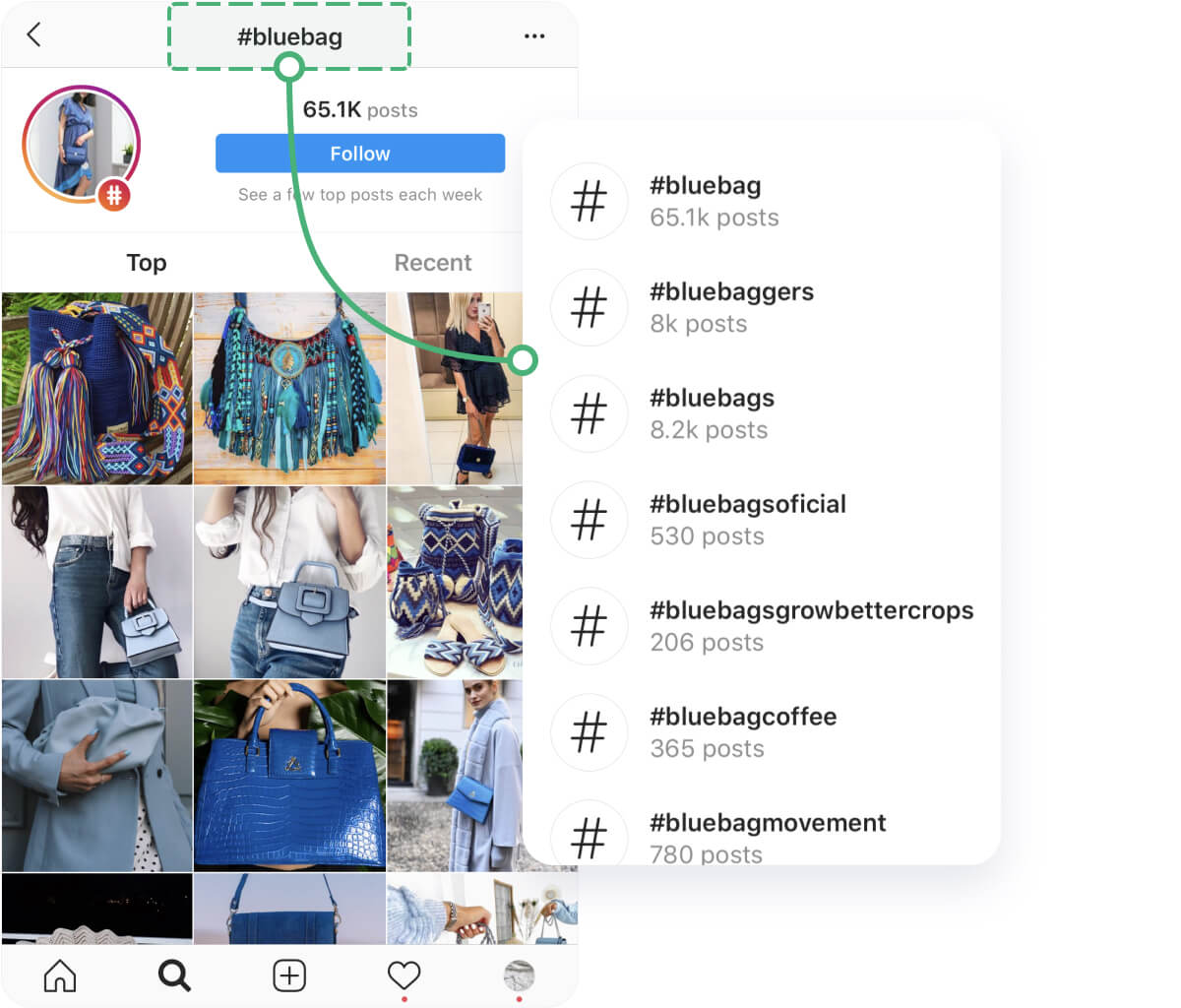
I know that you’re smart and erudite enough to already know this fact long before reading this article. But, hey, we all forgot the importance of hashtags for a while. Only hashtags let users find your products, services, or posts on the platform. If you want your posts to be found, liked, and saved, or if you wish your account to be followed, loved, and shared — use this newest, and the most reasoned, hashtag strategy. It is easy to apply — just 3 steps to let the magic happen. Stay tuned for the next chapter.
Mythbusting the #
Before diving into the hashtag strategy, we need to break a hashtag myth right now:
Most web marketers advise us to pay all our attention to these numbers near hashtags in a search. It is not the number of searches by this keyword on Instagram, but the number of posts that include it.
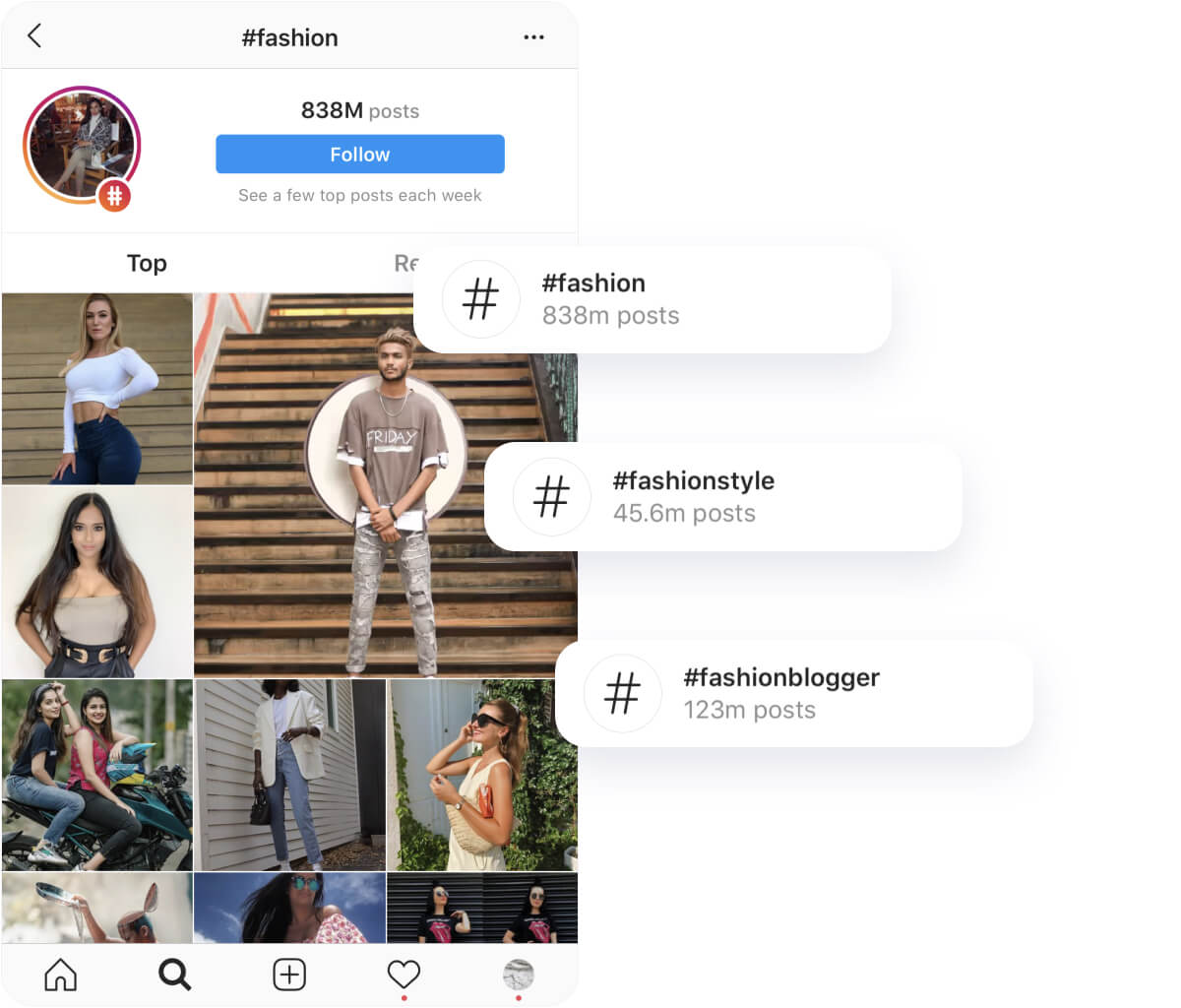
Adding hashtags with the “right” frequency is not vital for the strategy. Results of the correct 2022 hashtag strategy.
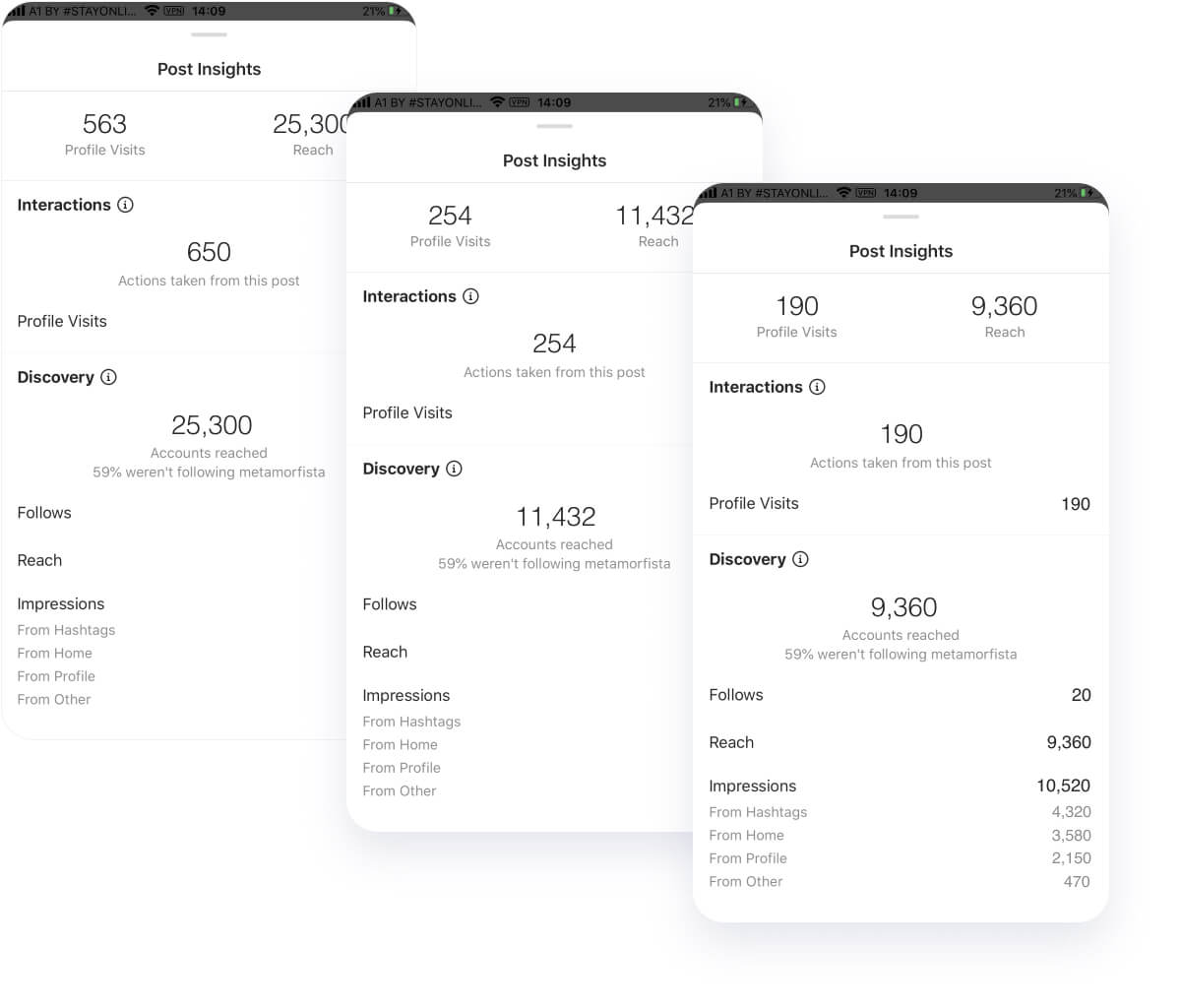
Impressive, huh?
3-step hashtag strategy for 2022
Ok, maybe you’re not a professional marketer. And you still think that it is better to use any words to describe what you’re promoting on Instagram. And anyone that’s interested will find you one day. And audience portrait creation is dull, complicated, and unnecessary.
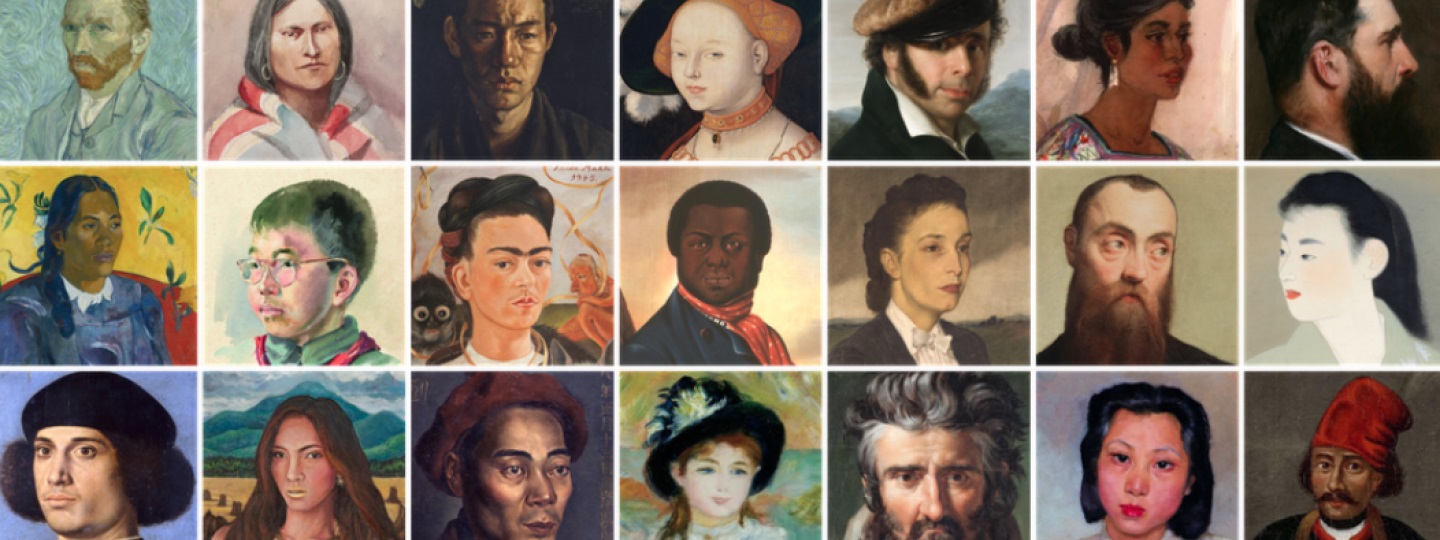
STEP 1
Find out who your potential follower is
To find and use hashtags that will 100% work to boost your sales or reach, you need to get closer to your specific community and your potential followers’ needs. What you need to do in this step is create an audience portrait.
Without this step, no successful hashtag strategy is possible. To simplify the understanding of the process of making a customer portrait, I’ll show you an example for a wedding dress store profile.
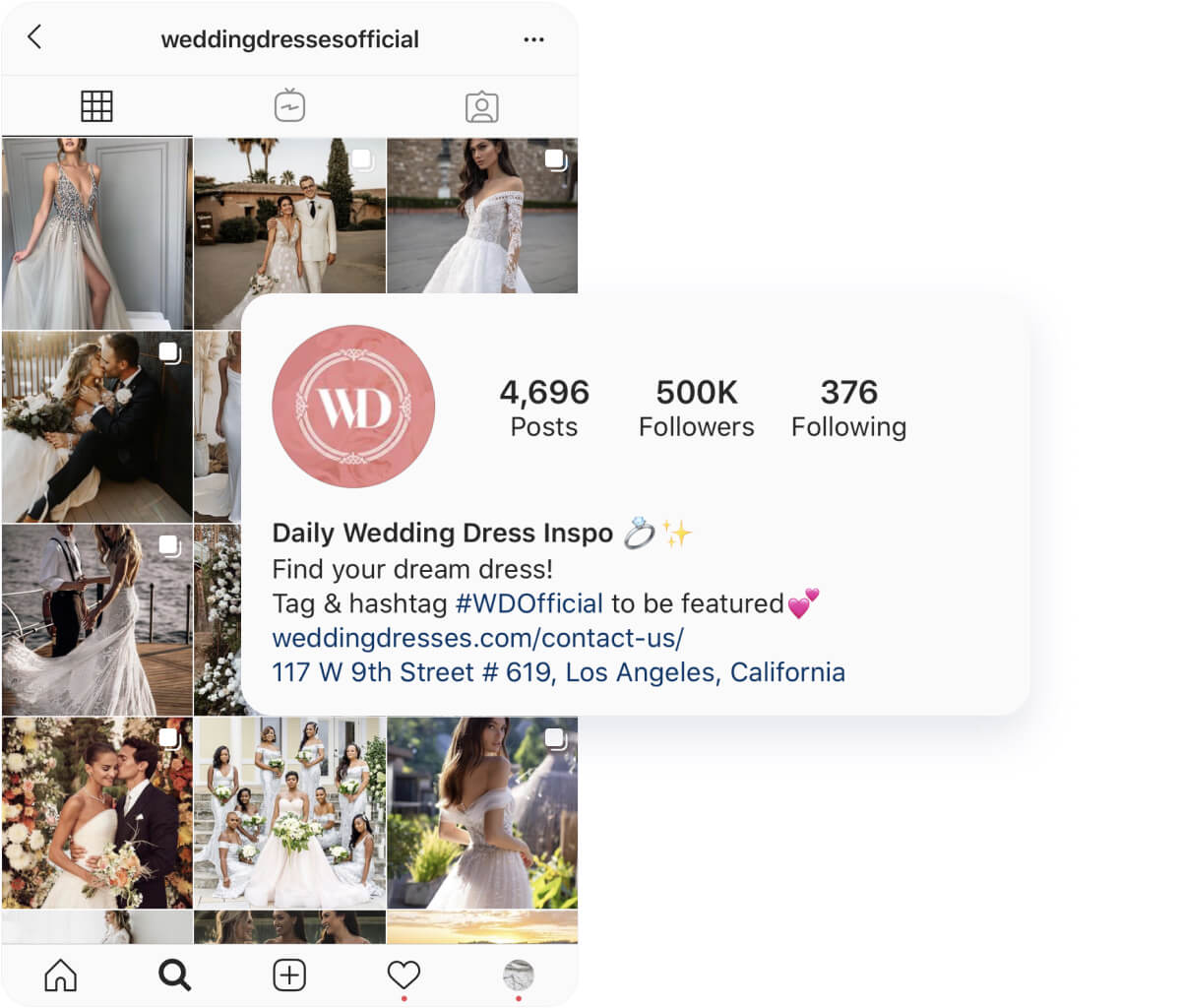
Describe a product with relevant hashtags
I have a wedding dress shop. I’m offering any size of dress for brides. My seamstress can fit any style of dress I have to any size. My clients can be from anywhere — I have worldwide shipping. #weddingdress is a suitable hashtag, but it is not ideal as it’s too popular. Thousands of posts appear under this keyword every day.
Let’s use a Hashtag generator to find suitable words for this point.
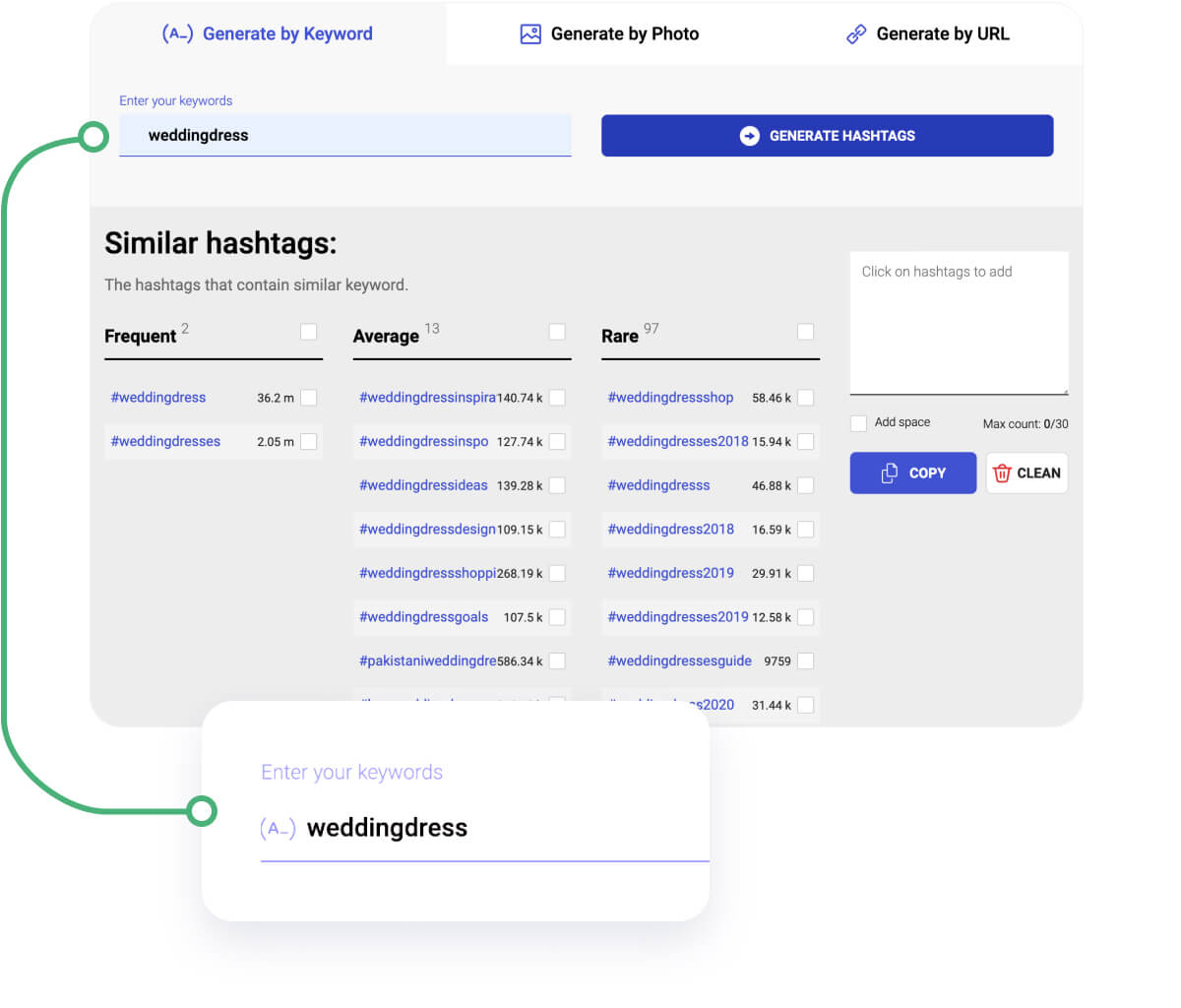
Describe a product with relevant hashtags.
The process of choosing and copying them is complicated and inconvenient in IG. But to add them from the hashtag generator is simple — just put a tick and chosen hashtags will appear in a copiable bar in the top right corner.
Create an audience portrait to pick up hashtags
My last customer was Mary. She is pregnant and going to be married. She is 32 and works as a hostess in a hotel. Her average income is $1500 a month. She loves yoga, beautiful luxury rooms, and romantic dresses. She follows bloggers like Leonie Hanne and Kim Kardashian. I need to reach girls like her with my posts. So, I will find hashtags searchable by this kind of audience. As Mary is interested in style and beauty during the maternity period, I should try to show it on my page: #maternitywedding
And check through the Hashtag generator for possible varieties:

Wow, these results are much more engaging. I would never have thought of using these words. Picture your customer’s goals and values. How does your product help this person achieve their goals?
Mary wants to have a big family. Her husband is very busy. Mary wants to look stylish and luxurious on her wedding day. Mary loves beautiful shoes and premium clothing brands, but shops at Asos. She wants to seem happy and calm, but in reality she is sad and freaked out.Think of how to show her that she will look great and happy in her wedding photos in your dress, and how amazing the #luxuriouswedding dress will look.
Analyze your customer pain points for the product you sell. Mary is nervous about how she will look in photos — she doesn’t want to look fat or too old. The pain point is her appearance. The challenge is the price. Show in your profile how perfect your dress looks in photos, and that it is averagely priced. Use hashtags that can interest girls who are looking for that dress.

Think about possible objections and the role of this person in a purchase. Does this person buy your product on their own? “This is too expensive. We don’t have enough time to choose. I’m too fat for it. I’m not sure that it will fit and I don’t have time to find a new dress.“ Find hashtags to dispel the doubts of a girl who has the same objections.
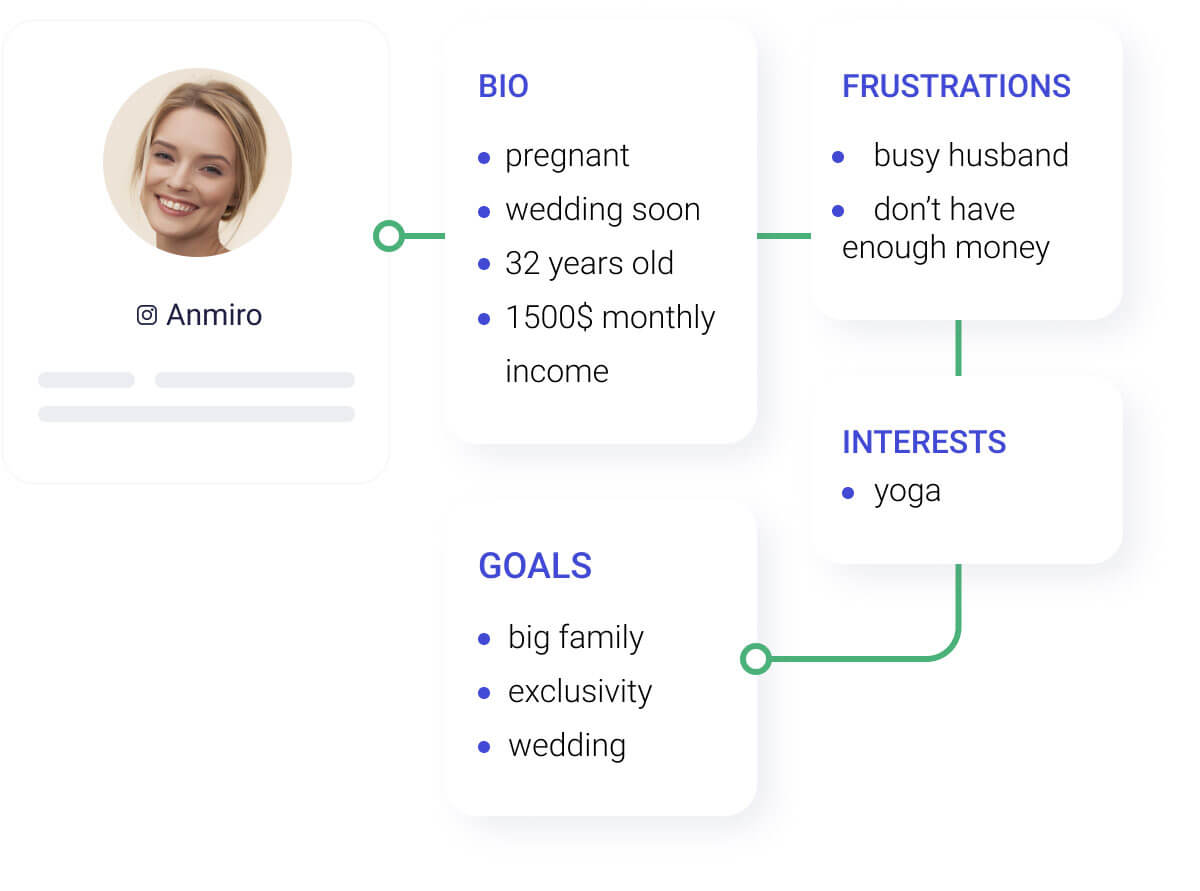
Now you have a marketing core for your target audience. Now you have all the facts about them. What brands does he or she like, what pages do they follow, what interests do they have? Segment your group of customers. Primary audience, sub audience, micro audience.
For the wedding dress profile, the segmentation looks like:
- Primary audience: brides and future brides;
- Sub audience: brides’ stylists;
- Micro audience: wedding studios.
STEP 2
Create hashtag group
You should pick up hashtags that relate to a primary or a secondary group. You need to pick up hashtag groups for each of these potential customers or followers:
Relevant
Concise and imaginable word. Normally this word has a community or even followers behind it. Examples: #beigeoutfit #weddingphotographer #bulldogsofinstagram
Nominative
Hashtags with names, locations, brands, etc. Examples: #Harleydavidson #fashionweekmilan2019 #kimkardashianoutfits
Pointless (don’t use them)
Nobody follows or searches for these spammy hashtags. We use them to share emotions and circumstances. Examples: #love #sunny #smile
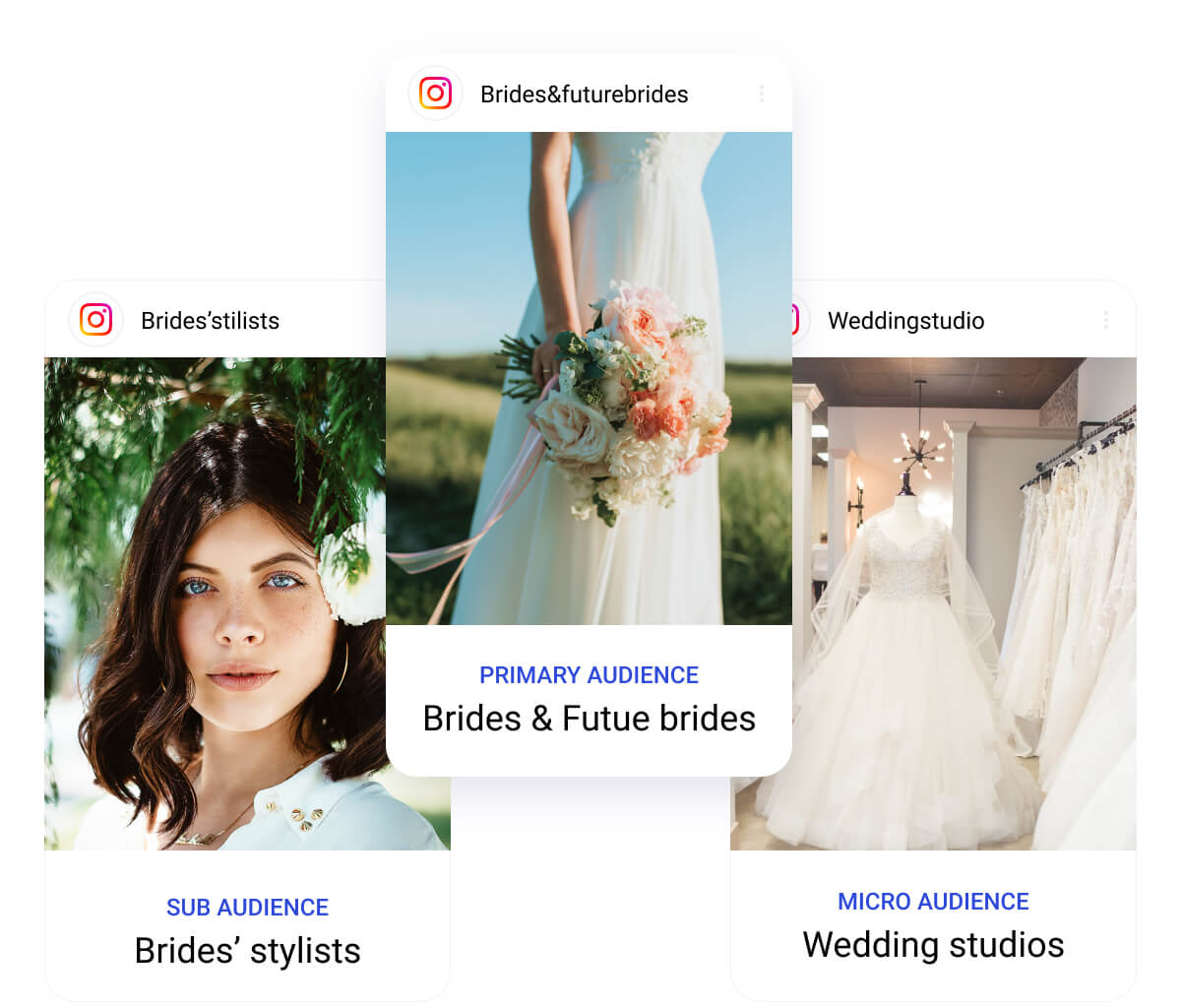
Check your hashtags
Before you choose any hashtag in a hashtag generator to add to any of your target groups, answer these questions and follow these recommendations:
1. What is the goal of the post this hashtag will be on?
- Do I want my potential customer to see it and like it? Choose more descriptive and detailed hashtags.
- Do I want potential clients to find meaning in my account and follow me? Use broader and more “industry” hashtags.
- Do I want to contribute to a broader conversation about a topic? Use “professional” narrow hashtags.
2. What categories does the content I am choosing hashtags for fall under?
- Does it mention a specific geographic area? Use location hashtags.
- Does it feature any other brands or companies, public figures, or well-known symbols? Use nominative hashtags
- What would people search for to find it? Try to use simple and human-like formulations of hashtags
3. Will my content look good in search results for this hashtag?
When you find a suitable hashtag, click on it in the Hashtag generator to see the content where it is used. Check if the posts are right or not. Check if the search results for it are related to your topic. Should your content appear in such a search?
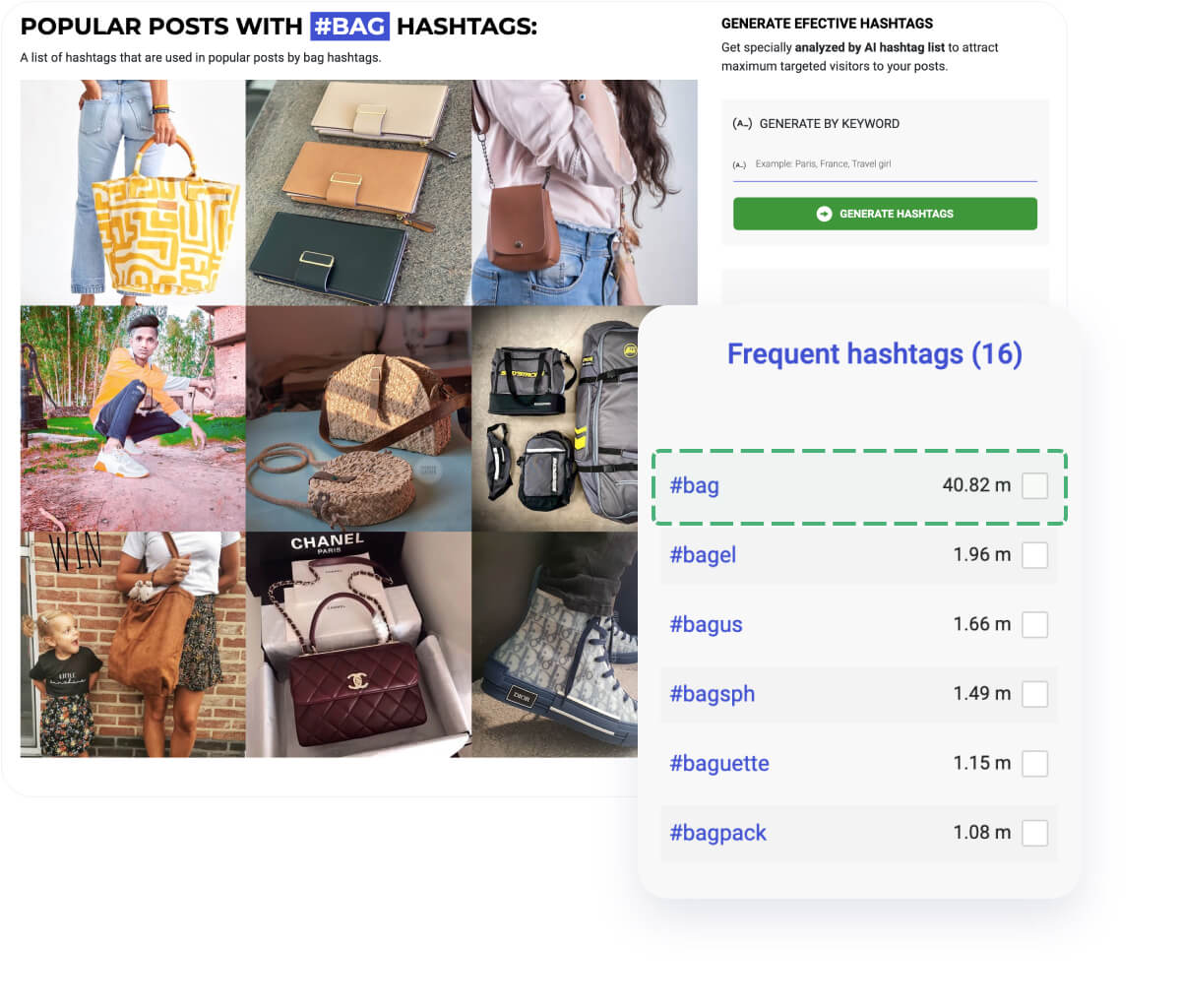
You can use this tool not only for searching by a photo but also a link or simply typing in a base word. To promote your post, it is essential to combine different types of hashtags correctly. Each group has a particular function: some attract new subscribers, others give information about your product, and another generates leads.
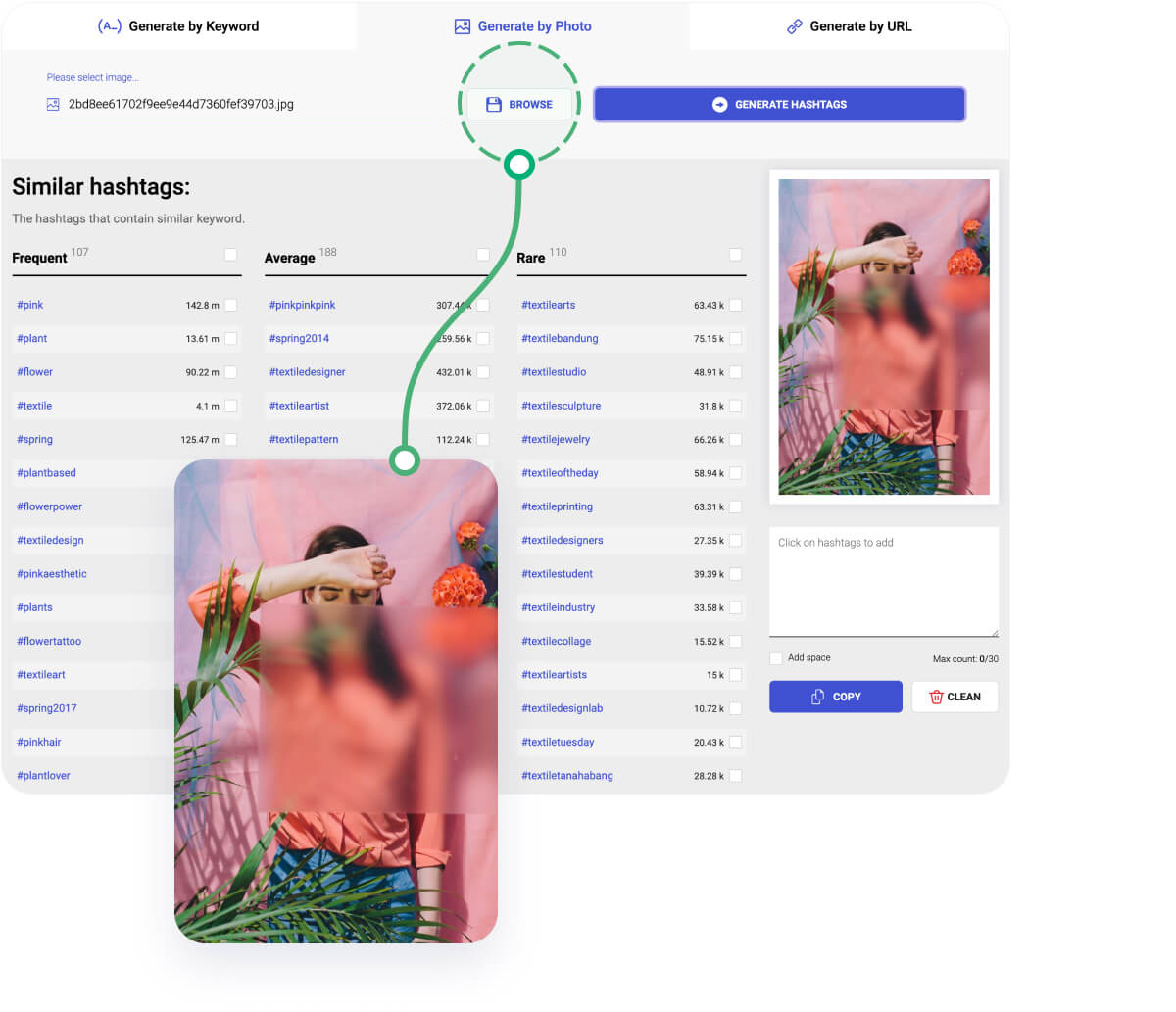
Types of hashtags by perspective:
- Industry hashtags #weddingtrends;
- Niche hashtags #handmadeweddingdress;
- Location hashtags #sydneyweddingdress;
- Event hashtags #weddingphotographermeeting;
- Brand hashtags #weddingphotographermeg;
- Community hashtags #weddingphotographergroup;
- Celebration hashtags #kimwedding2022.
STEP 3
Test, analyze, refresh
You should pick up hashtags that relate to a primary or a secondary group.You need to pick up hashtag groups for each of these potential customers or followers:
Testing
After you’ve got a few groups of hashtags, you need to pay attention when you add them to your posts. Test in these steps:
- Organize a group of hashtags;
- Put them on two newly posted publications.
Check impressions through hashtags in Insights and compare them with each other.
Analyzing
You need to have a business account for full testing.
- Select the publication for detailed analysis;
- Click on the View insights button;
- Swipe up to see the analytics of the selected post.
Pay attention to impressions: from home, profile, hashtags, etc. Concentrate on impressions from hashtags. Compare it to other publications with other hashtag groups. Try to figure out which hashtags bring your impressions and followers. Amend hashtags based on this knowledge and move on further.
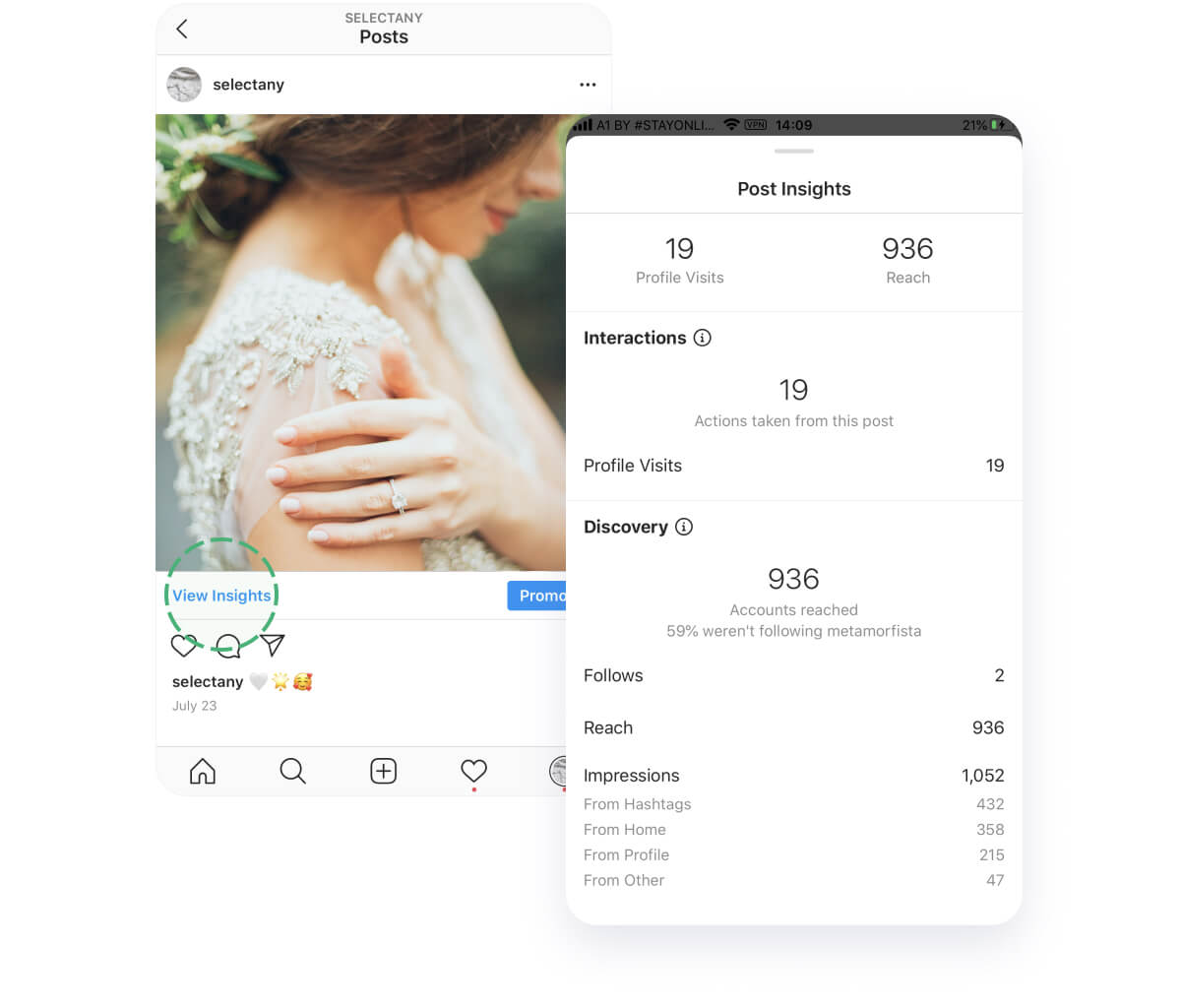
Refresh
You need to mix your hashtag groups, refresh them constantly, and never use the same group of hashtags more than 2-5 times in a month. Also, it is better to delete “old posts” hashtags after some time has passed. Do the “hashtag clearance” once a month. Leave only vital and important hashtags in old posts. Why should you delete hashtags from old posts?
- Avoid copying and duplication on profile;
- Don’t let your competitors take your successful hashtag combinations.
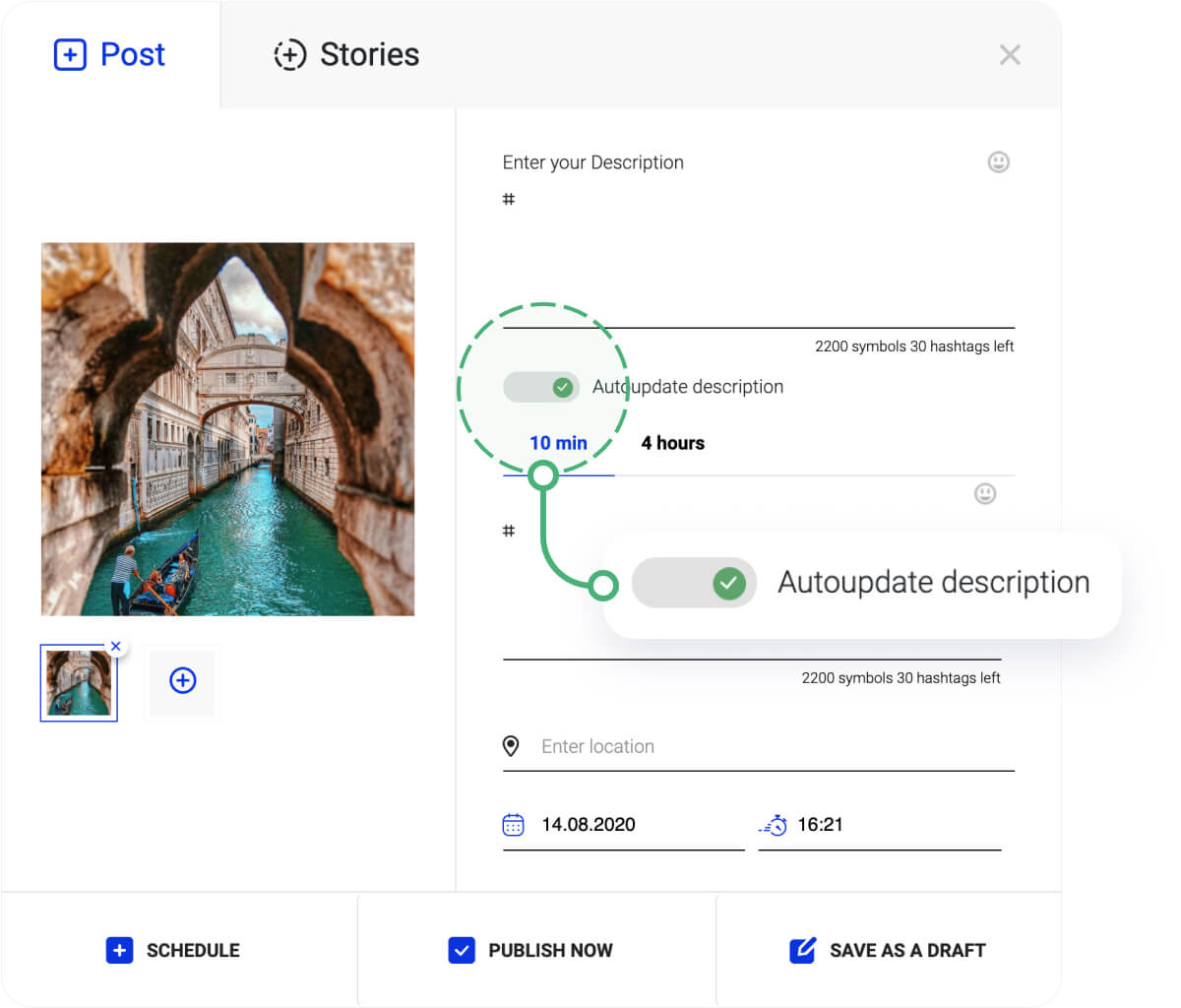
Lastly
My 2022 hashtag strategy is simple but requires an understanding and deep research of your target audience. This knowledge is vital for every entrepreneur, not only for picking up the right word to be found but for creating good content to be loved. Each of your Instagram posts should have its own hashtag strategy. Treat your hashtags like the only possible keywords on the platform — and they will bring sales, impressions, and followers.
